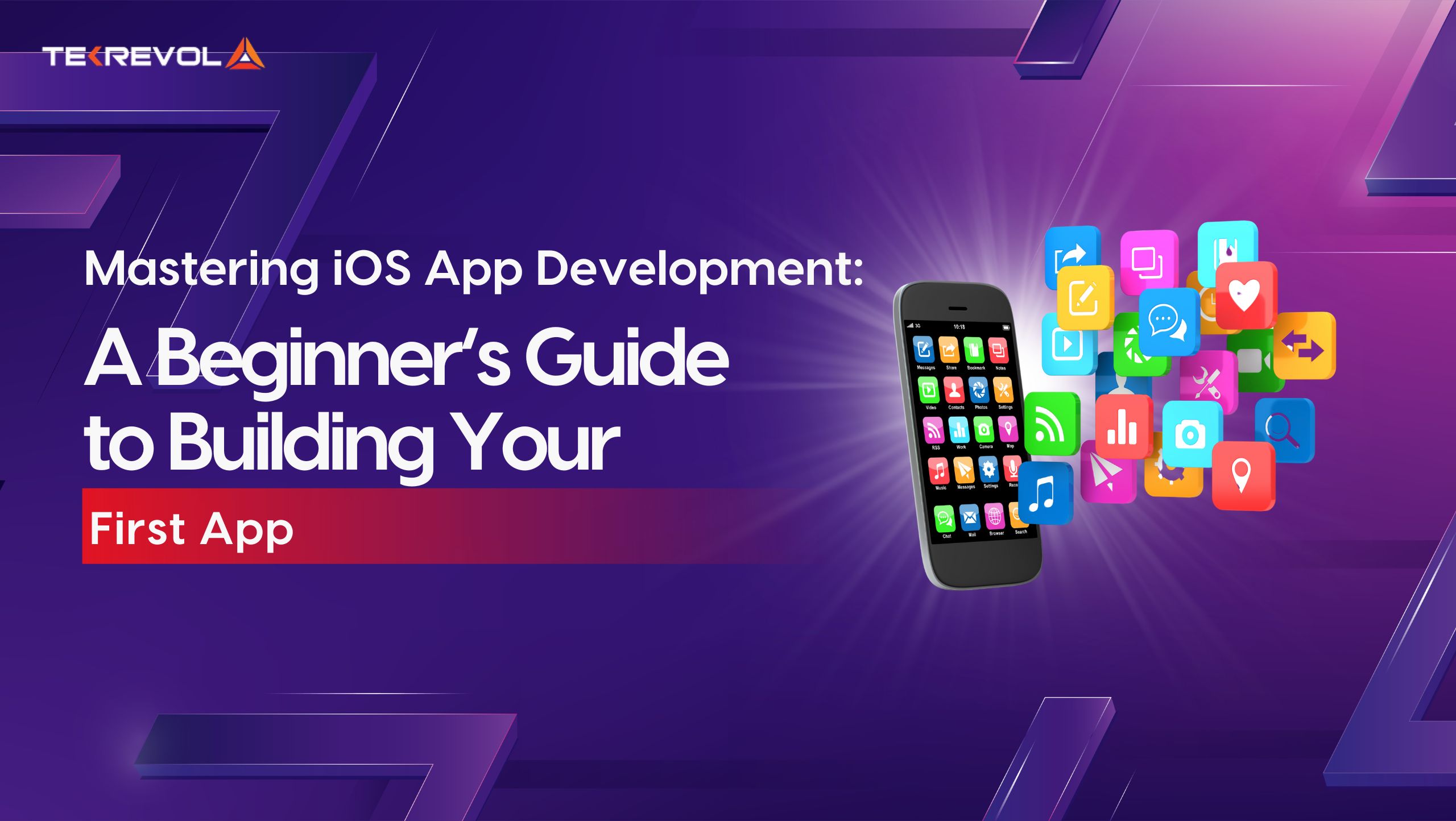React Native is indeed an important framework in mobile app development, and as 2025 approaches, developers and business owners continue to embrace It. Whether you’re designing your first app or taking your current app to the next level, you will be able to build excellent apps for various platforms without having to start from scratch.
The survey shows that React Native is the most popular mobile development framework with 37.9% of developers using it. Why? Because it’s efficient. It means you can rewrite a mobile app for Android and iOS 90% identical, saving a tremendous amount of time and money.
Since we have practical experience dealing with React Native, we believe that it would be useful to compile a list of basic tools, the latest information, and new things introduced this year. So, let’s start with new and how to proceed to maximize the use of this strong framework!
Why does React Native Continue to Dominate Mobile App Development?
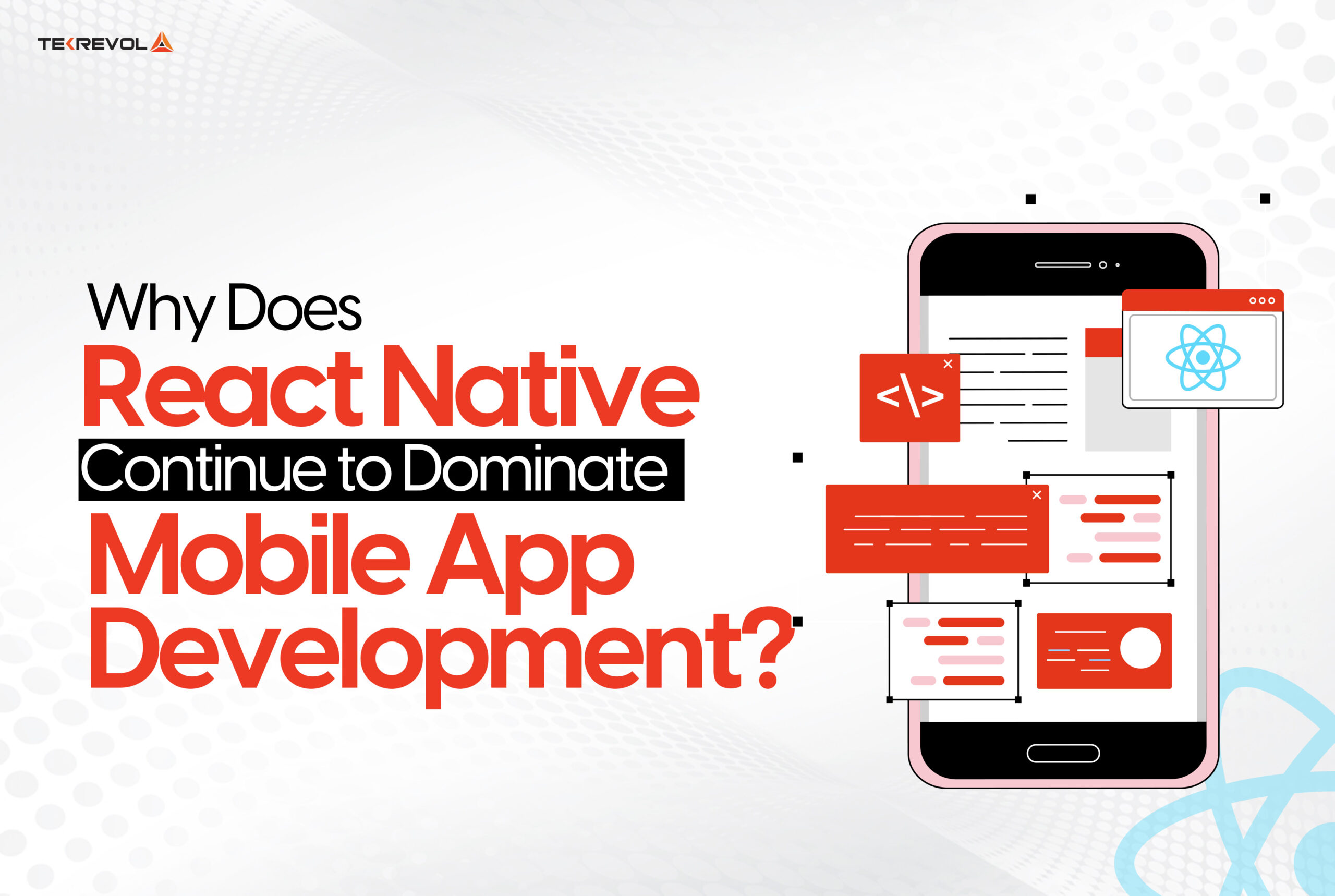
React Native has been one of the most dominant platforms in the field of web and app development. Constructed with the support of JavaScript and React, it makes the development cycle smoother for developers, as they can create the code only once that will work on both iOS and Android. It also saves time and guarantees that applications run fluently and are almost indistinguishable from native ones.
The latest statistics show that React Native occupies 13% or more of the market share among the cross-platform frameworks, ranking it among the most favorite tools for developers and companies. Its gradual expansion proves its efficiency and adaptability to the demands of the market.
But it’s even more impressive to see how far and wide React Native is implemented. Companies in a diverse range of sectors, including retail and commerce, social media, finance, and healthcare, use it to create intuitive, highly effective apps.
The secret to its popularity? The strength of React Native includes its ability to deal with functionalities, immense performance, and compatibility with micro frontends. It can accommodate simple applications as well as complex feature-filled platforms, depending on the nature of the project at hand.
If you’re still in dilemma which framework or solution should be used in the next mobile application to be developed? Stay tuned as we explain the advantages, and how react native works and discuss why we should choose React Native to make your ideas come true.
- Are you ready to build your app with React Native?
- Let TekRevol help you create a high-performance app that stands out in the market!
- Let’s Connect!
Why Choose React Native for Mobile App Development? Key Advantages

React Native has gained the reputation of being one of the best platforms for leveraging an efficient and high-performance solution for business. React Native’s seamless compatibility with Android and iOS is changing the way apps are developed across these platforms.
Now let us discuss the main benefits of using React Native as one of the most popular tools for app development.
1. Single Codebase, Dual Platforms
Native app development typically requires different code bases for both IOS and Android platforms, which doubles the time and effort. This challenge is solved by React Native since it enables the development of an application with a single code that runs well on the two platforms.
Using React Native, developers can use a single codebase to target multiple platforms, saving time and money. The result? Rapid and more efficient app deployment, efficient updates, and maintenance, coupled with stable and smooth functioning in the devices.
2. Reusable Native Components
The new concept in React Native mobile app development is a component-based approach, which gives developers the ability to work with native building blocks used throughout the application. Unlike traditional hybrid apps, these components plug into the underlying platforms to offer a real and native hybrid app.
It also makes your app look and behave like a native application with fluid transitions, great UIs, and optimized performance. The use of reusable components is also very helpful in-app updates and scaling.
3. Seamless Integration with Existing Code
Moving to React Native does not mean having to start over from scratch. It means that it will be easy for developers to introduce React Native components into current projects seamlessly. What makes this feature highly useful is that it provides a way to integrate new capabilities into the existing architecture without having to rebuild from the ground up.
Using React Native, you can bring your application to the modern level while retaining the prior investments made in development.
4. Extensive Third-Party Plugin Support
React Native fills the gap in Cross-Platform development in terms of features and hardware compatibility. Moreover, the third-party plugins are fully integrated, allowing the expertise to integrate the specific hardware such as GPS, Bluetooth, and Camera functionalities.
These plugins help reduce the amount of time spent in development and solve most problems which include slow load time or high memory utilization. The overall outcome is an app that is both packed with features and also fast and stable.
5. Improved Code Quality and Efficiency
Developers can prevent duplication by using a single set of codes, which reduces the likelihood of introducing flaws. It also tends to reduce test coverage, allowing the development team to provide a stable product with fewer faults and problems.
6. Hot Reloading for Faster Development
One of the most popular features of React Native is called hot reloading which allows a developer to preview the code modifications without having to stop the application. This capability definitely accelerates the development process, and enables testing of new changes to the app without having to necessarily lose the flow of the current app version.
Whether working on fixing bugs or adjusting the look and feel of particular UI elements, hot-reloading just makes the process for developers better.
7. Vibrant Community Support
React Native has a large and active developer community that offers libraries, examples, and tutorials, as well as a forum. They build a network that fosters innovation and provides access to current techniques and resources.
As the community continues to contribute and companies like Facebook invest in its development, React Native evolves to meet the needs of modern applications.
8. Cost-Effective Development
Creating applications for many platforms is no longer impossible for a single group. The process of development using React Native is also centralized and costs a lot of money relative to other frameworks without a decrease in quality. By reusing both components and logic, developers can reduce their work input while creating products that provide excellent user experiences.
9. High Performance Across Platforms
The feature of integrating native components means that apps built with React Native are high-performing apps with fluent interfaces and smooth reactions. For demanding applications, it’s also possible to compile using pure Apple native code, to improve performance.
With React Native, you can write performant applications for platforms of varying sophistication, whether these are basic applications or complex, feature-filled solutions.
10. Consistent User Experience
React Native enables developers to maintain a uniform design across different devices. Thus, the sharing of UI components and business logic ensures that it runs well on both iOS and Android platforms making the user interface better.
This consistency is not only pleasing to the users but also helpful in-app updates and maintenance to help businesses ensure they are competitive in today’s markets.
What Are React Native App Development Services?
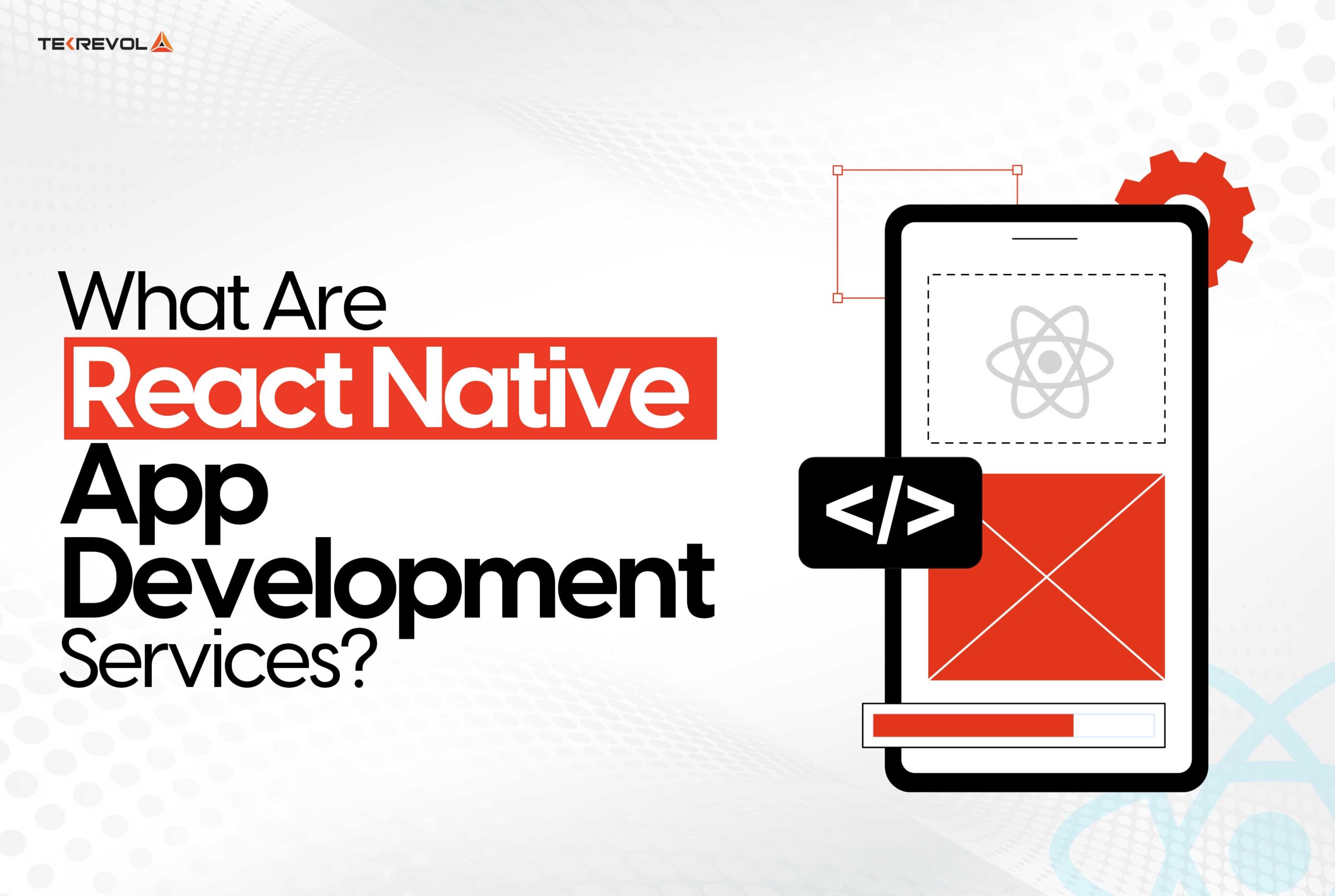
React Native app development services include the development of mobile applications that work on both the iOS and Android platforms using the framework called React Native. Developed by Facebook, React Native utilizes JavaScript to deliver near-native performance in application development, cheaper than the native approach.
Due to the involvement of numerous tools, libraries as well as plugins, React Native helps in faster development. This efficiency and flexibility make it a go-to option for businesses that are striving to develop high-performance applications with rich functionalities but a limited budget.
React Native development services are all about developing high-performance cross-platform applications effectively as well as saving time and money. Here’s what they offer:
- Develop your apps for both iOS and Android environments all at once through the reuse of code which leads to a reduction in costs.
- Get a highly responsive feel on both platforms while avoiding the creation of two distinct development processes.
- Use JavaScript, a universal language for web and mobile developers to improve compatibility and integration with existing developers’ processes.
- Ease of adding additional plugins and libraries as a way of increasing usability with little trouble.
- Hot reload and live reload mean real-time changes, making it easier to debug and deploy for quicker turnaround time.
When Should You Choose React Native for App Development?
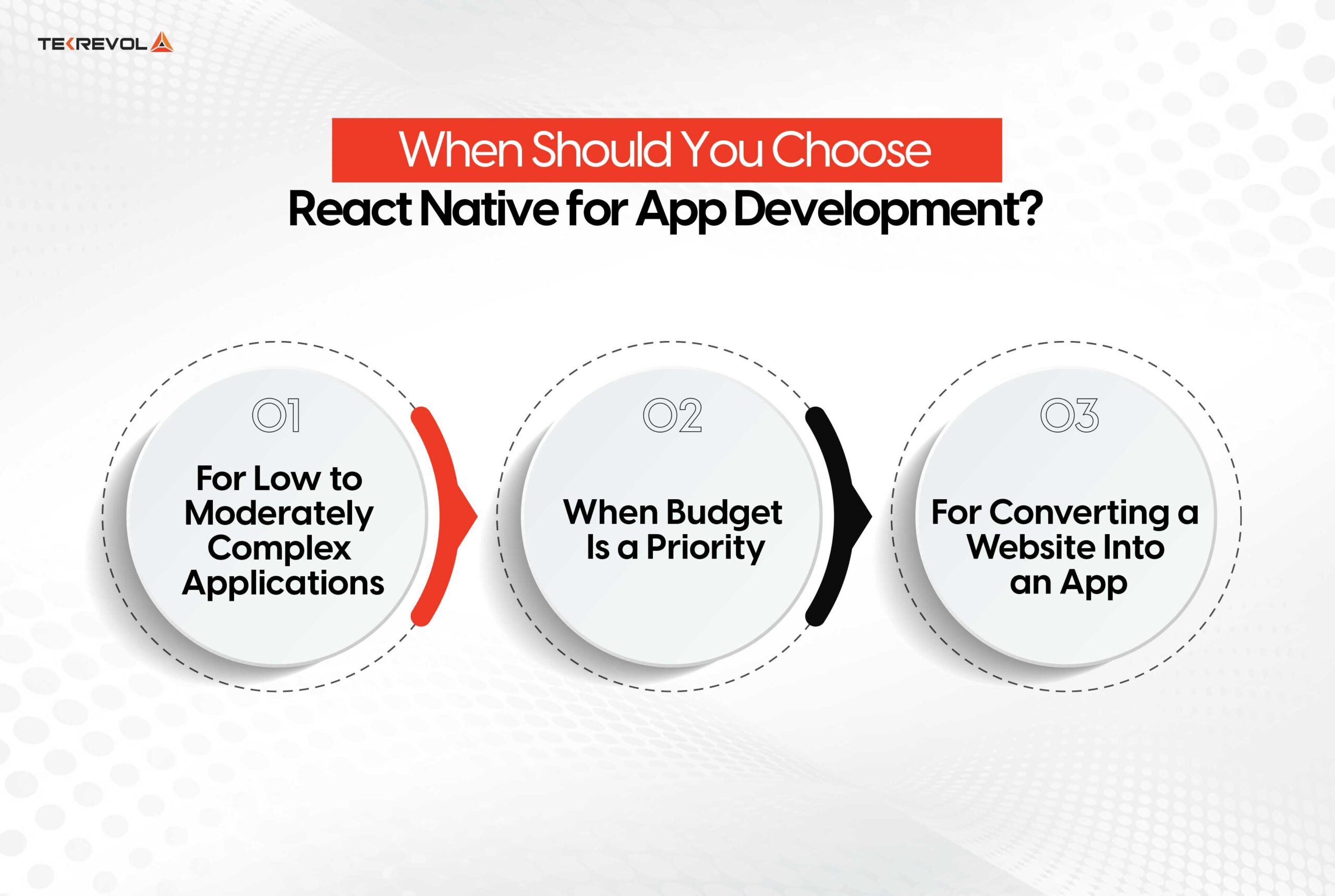
React Native is a very strong framework that allows great effectiveness in building apps for multiple platforms, which leads to significant cost and time efficiency. Here’s when React Native is the right choice for your app development needs:
1. For Low to Moderately Complex Applications
If your application does not entail complex functionalities or animation with heavy computation processes, then using React Native to build it is the best option. It can easily handle minimalistic apps such as social apps, e-commerce apps, or MVPs, which are primarily focused on usability and the app’s ability to go live quickly rather than optimized performance.
2. When Budget Is a Priority
React Native is the best when it comes to businesses that are seeking to minimize their development costs. A primary advantage is that it develops a single code base, which means that you save time and money compared to developing separate iOS and Android applications. This makes it suitable for startups and small businesses planning to develop an app that can operate without causing financial strain.
3. For Converting a Website Into an App
React Native stands out when it comes to transforming an existing website into a mobile application. Its reusability of web components makes it faster for the results to be produced and also guarantees uniformity across the different platforms. Companies with an established online presence can seamlessly transition to mobile without building everything from the ground up.
- Looking to leverage React Native for your next app project?
- We can guide you through the development process, ensuring a seamless experience on both iOS and Android!
- Talk to Our Experts!
When Should You Avoid React Native for App Development?
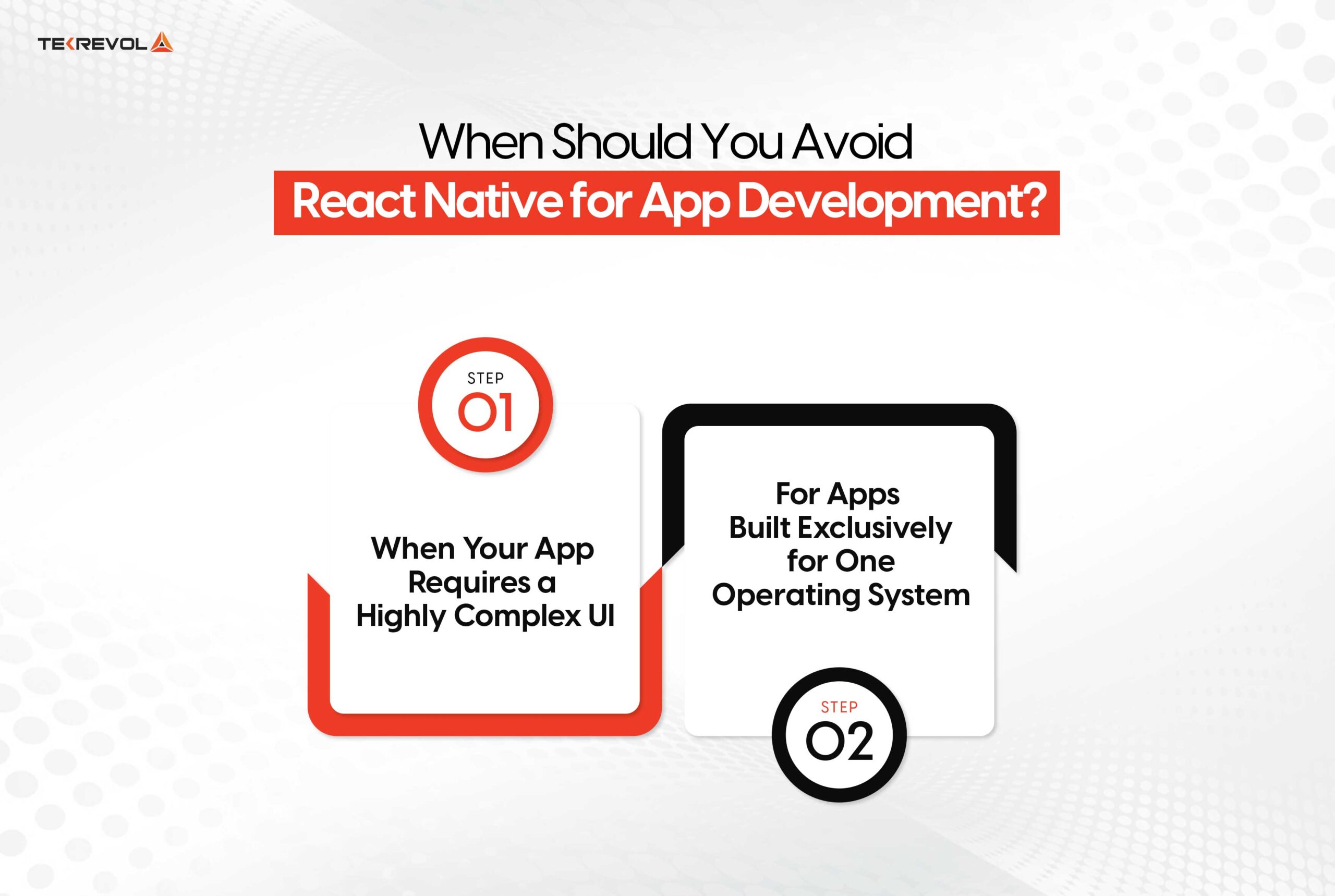
As with any technology, until one finds the perfect fit, React Native has its pros and cons that still may not be the best technological tool for every application. There are certain cases that require native development, particularly when performance or design is an issue. Here are situations where React Native might not be the best fit:
1. When Your App Requires a Highly Complex UI
When your application requires accurate user interface constructions, complex animation, or complex graphics, native development is preferable. Proprietary frameworks such as Swift for iOS or Kotlin for Android offer more control and optimization compared to non-native languages for smooth-performing graphics-heavy applications.
2. For Apps Built Exclusively for One Operating System
When your application is going to support iOS or only Android then, in that case, native development is more effective. Native programming is beneficial to developers because it enables them to take advantage of the features of the intended platform.
Why Consider React Native Alternatives?
While React Native is best suited for developing applications for both platforms at the same time. Its effectiveness in utilizing those native features or developing highly demanding, complex applications is rather constrained. In such circumstances, opting for the native development process guarantees the best outcome and design accuracy specific to your business.
Top Strategies for Scaling Your App with React Native Development
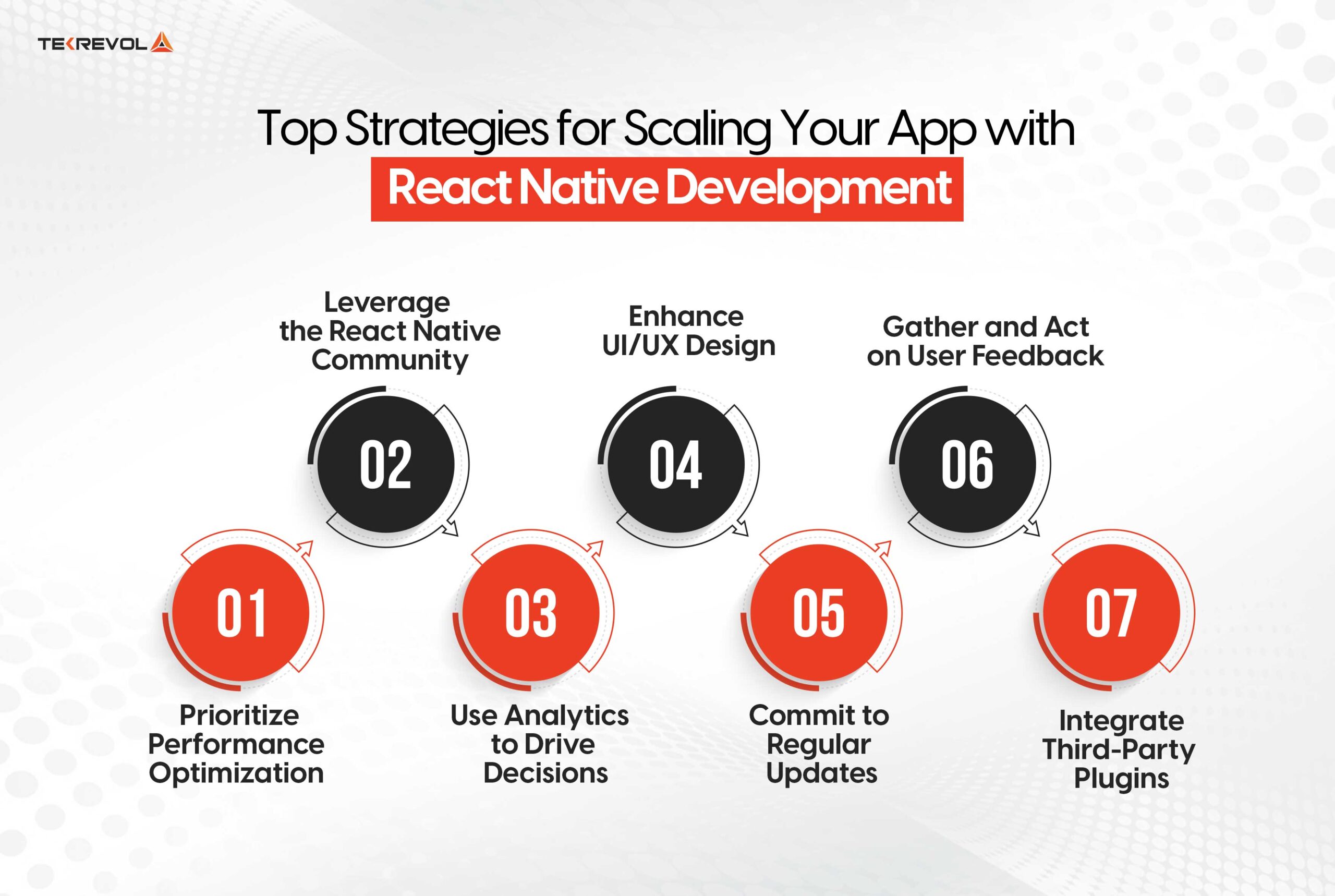
The use of React Native app development services depends on strategic planning and implementation. Here are actionable strategies to ensure your app remains scalable, user-focused, and competitive:
1. Prioritize Performance Optimization
Always validate and optimize your app to ensure it runs with the expected efficiency level. Eliminate issues that hamper quick web page navigation, and animations, or consume system memory. Use tools like React Developer Tools and some profiling libraries to quickly identify problems and keep optimality.
2. Leverage the React Native Community
React Native is open source and has a very active and large base of users and contributors. Utilize the forums, GitHub repositories, and social media sites to get in touch, and know the trends of new libraries and tools. The use of community collaboration can assist in resolving the challenges more quickly, as well as incorporate new features.
3. Use Analytics to Drive Decisions
Establish strong analytics solutions such as Google Firebase, Mixpanel, or Amplitude that will track app usage. To identify the patterns of user activity, the usage of native features, and points of flow or loss. These insights will help you to define what needs to be further developed to add or improved to remove in order to meet the users’ expectations.
4. Enhance UI/UX Design
Design an amazing app interface that is comfortable for the user. Pay attention to the unification of the design, navigational possibilities, and access. Maximize the versatility of React Native by creating subsidiary components that reflect your brand but do not cause an inconvenient transition between platforms.
5. Commit to Regular Updates
It is essential to update the application with the most recent React Native updates in order to fix found bugs, enhance app performance, and make it more compatible with new operating systems and devices. A commitment to supporting the end user and offering the highest caliber of application is demonstrated by continuous improvement.
6. Gather and Act on User Feedback
If your product includes a web application, include feedback forms, polls, or a feedback section for users. Make sense of this feedback to identify unpleasant experiences, decide where to focus, and create features that will benefit consumers the most. Proactive communication strengthens client trust and encourages loyalty.
7. Integrate Third-Party Plugins
Use third-party plugins and libraries to expand your app’s functionality. Adding a payment gateway, geolocation option, or chat system as a website plugin is a viable alternative that does not need to start from scratch. When picking plugins for a certain site, always consider compatibility and performance.
Top React Native Development Tools for Streamlined App Development

Selecting the right tools for the job is critical to building efficient and highly performing applications using React Native.
At TekRevol, we use a set of effective tools to develop a unique solution that meets your business requirements and is affordable and scalable. Now, let’s take a closer look at the primary tools used during React Native development.
| Tools | Purpose | Key Features |
| Visual Studio Code | Lightweight yet powerful code editor for React Native apps. | – React Native tools for debugging and IntelliSense.
– Prettier for code formatting. – ESLint for linting. – GitLens for version control integration. |
| WebStorm | Advanced IDE designed for JavaScript and React Native development. | – Intelligent code completion.
– Error detection with quick fixes. – Built-in terminal. – Refactoring and navigation tools. |
| React Native Debugger | A standalone debugging application for inspecting React Native apps. | – React dev tools for component hierarchy.
– Redux dev tools for state management. – Chrome dev tools for network requests and breakpoints. |
CLI vs. Expo: Which Should You Choose?
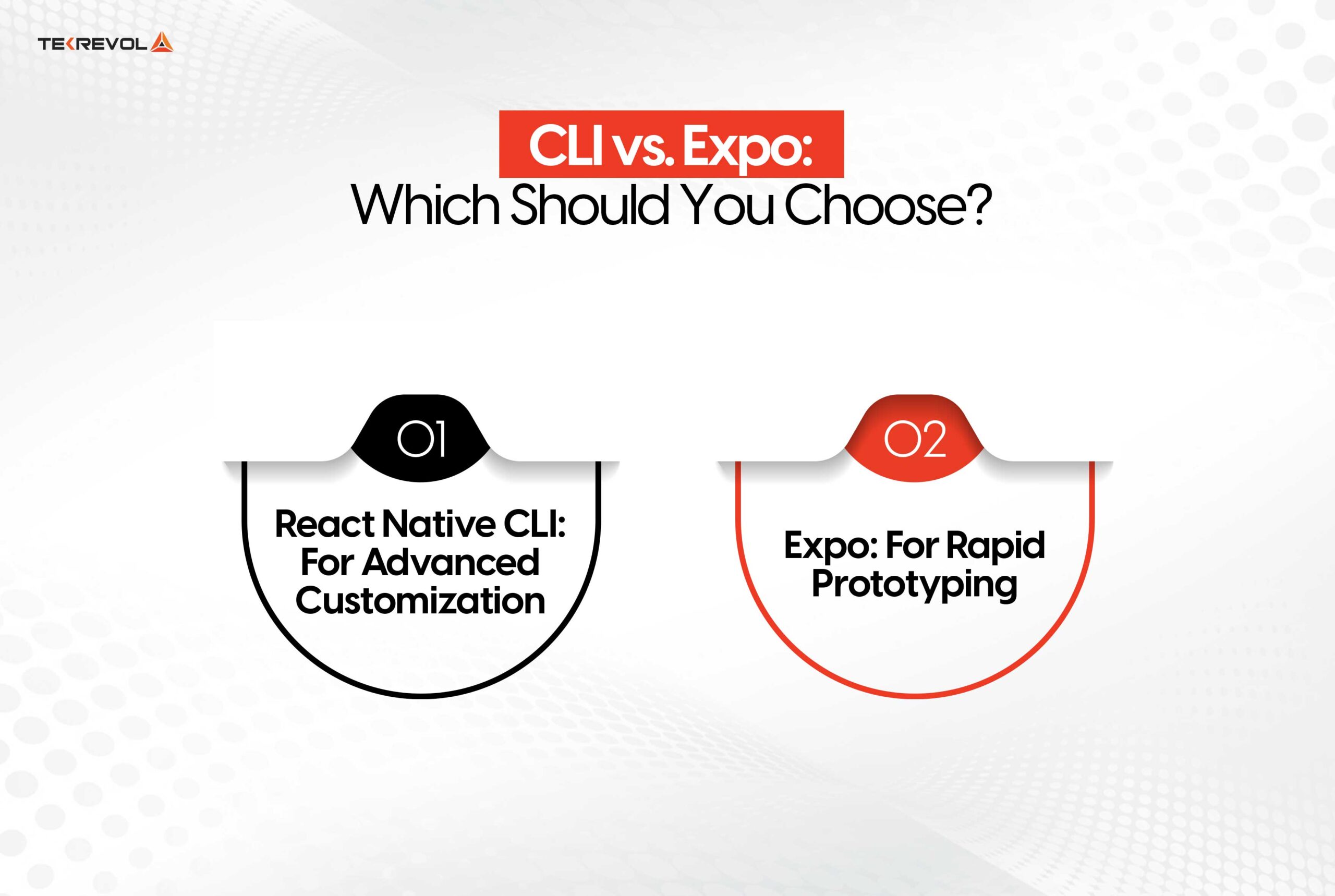
When starting a React Native project, you’ll likely need to choose between two popular approaches: React Native CLI and Expo. Each has its strengths based on project specification and the programmer involved in the project development.
React Native CLI: For Advanced Customization
If you want complete control and the flexibility to construct applications from the ground up, you should use the React Native CLI. This is suitable for experts in native modules and developers who need more control over the project.
Advantages:
a.The ability to have fully controlled dependency and native module.
b.Access to the native code for Android os and iOS.
c.Suitable for large applications that need some specific functionality.
Considerations:
a.Takes longer to set up and implement than client-server operating systems.
b.More suitable for experienced developers.
Expo: For Rapid Prototyping
Expo also offers a pre-configured development environment as well as prepared components and APIs if developers want to jump-start the development process. It is most suitable for use on small-scale projects and for the preliminary development of software designs.
Advantages:
a.Easy for new players due to its ease of installation.
b.Templates to accelerate the creation of assets.
c.Great for basic requirements and situations.
Considerations:
a.Native modules are not available in many territories.
b.Grater flexibility compared with React Native CLI.
- Struggling with your app development timeline?
- TekRevol can help accelerate your React Native app development for quicker go-to-market results!
- Contact Us Now!
New Features and Updates in React Native Developer Tools
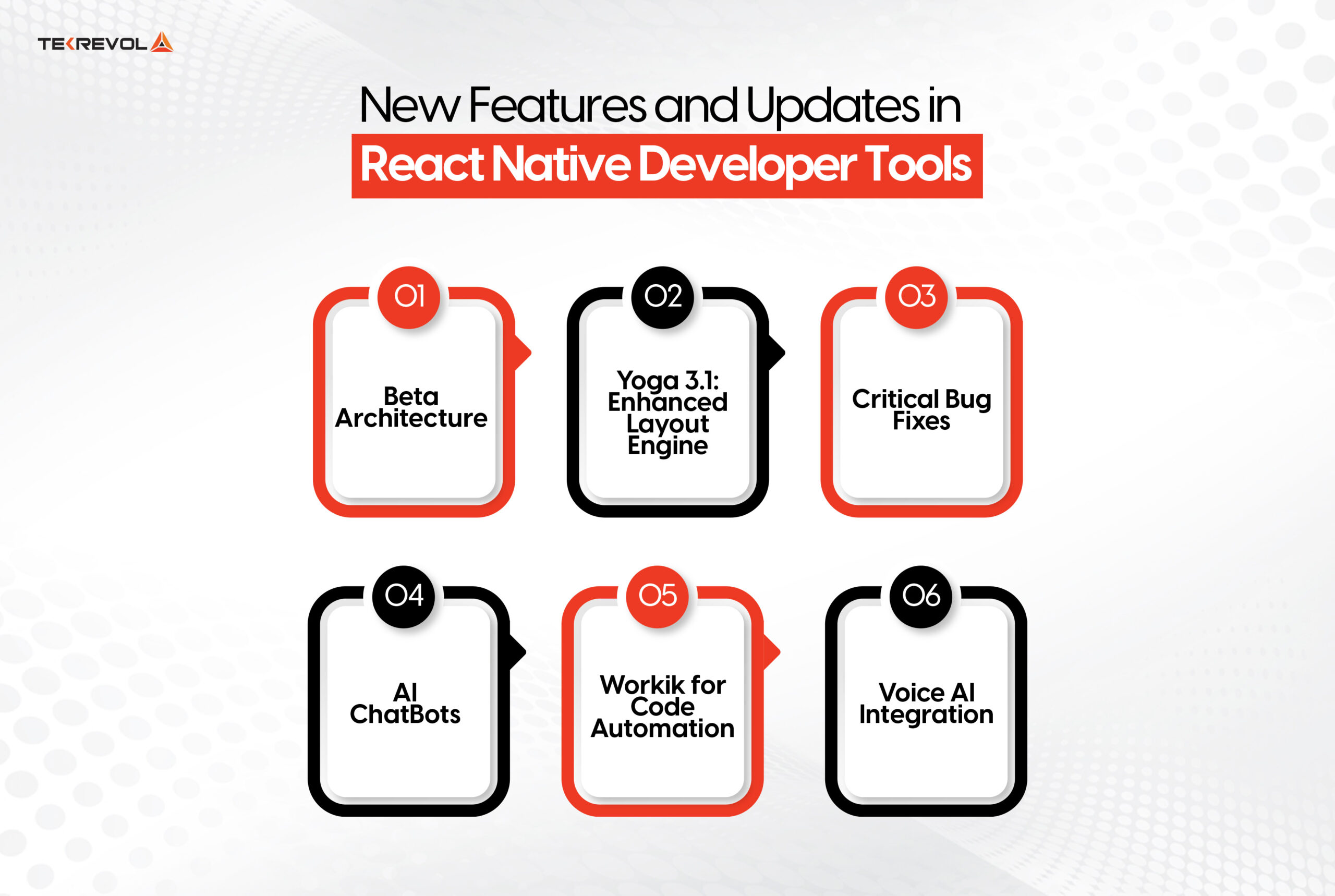
New updates are bringing mobile app development to the next level with react native. React Native 0.75 has introduced features that help in Android and iOS development, and Meta has yet to release a groundbreaking update on its Fabric version. But until we get this revolutionary upgrade, let me write about the most basic (but significant) changes that are available to us.
Beta Architecture
The beta architecture that was initially started with version 0.68 has improved over time and the current coding mechanism is even better. This architecture is fully compatible with Expo SDK 51 and improves performance and communication with the JavaScript environment.
Moreover, it also speeds up application deployment and simplifies the integration of native modules. It is planned to be set as the default in the upcoming months, which should benefit development teams in terms of productivity.
Yoga 3.1: Enhanced Layout Engine
The layout engine of the latest Yoga 3.1 is revolutionary. It helps maintain percentage values for gaps and translations, which makes the manipulation of the apps for different screen resolutions and orientations easier. This improvement also eliminates the need for using placeholders or setting values manually and leads to the enhancement of code quality with fewer bugs.
Critical Bug Fixes
Some of the issues that are solved in this release include text alignment issues across platforms and issues with the ‘adjustsFontSizeToFit’ on Android. These fixes reduce the usage of the debugging tools which can also be very time-consuming to the developers and achieve better user experience.
AI ChatBots
Recent developments include the availability of AI capabilities for React Native chatbots through packages such as dabit3. These chatbots work with a variety of language model providers, including OpenAI’s ChatGPT, Google Gemini, and Anthropic’s Claude. They offer rapid replies, a First- and Second-Generation OpenAI Assistant, and integrated picture analysis to improve context-aware user interactions.
Workik for Code Automation
The Workik AI React Native Code Generator is a tool that helps solve the problem of repetition in app development. It takes UI/UX design and generates working code in React Native, allows seamless integration of third-party libraries, and produces cross-platform apps, which greatly benefits developers working on huge projects.
Voice AI Integration
The Alan AI Platform introduced some of the key voice commands for React Native applications. It allows for hands-free control, combines auditory with touch and visual feedback, and personalizes voice for specific functionalities within apps for better usability.
Challenges of React Native App Development
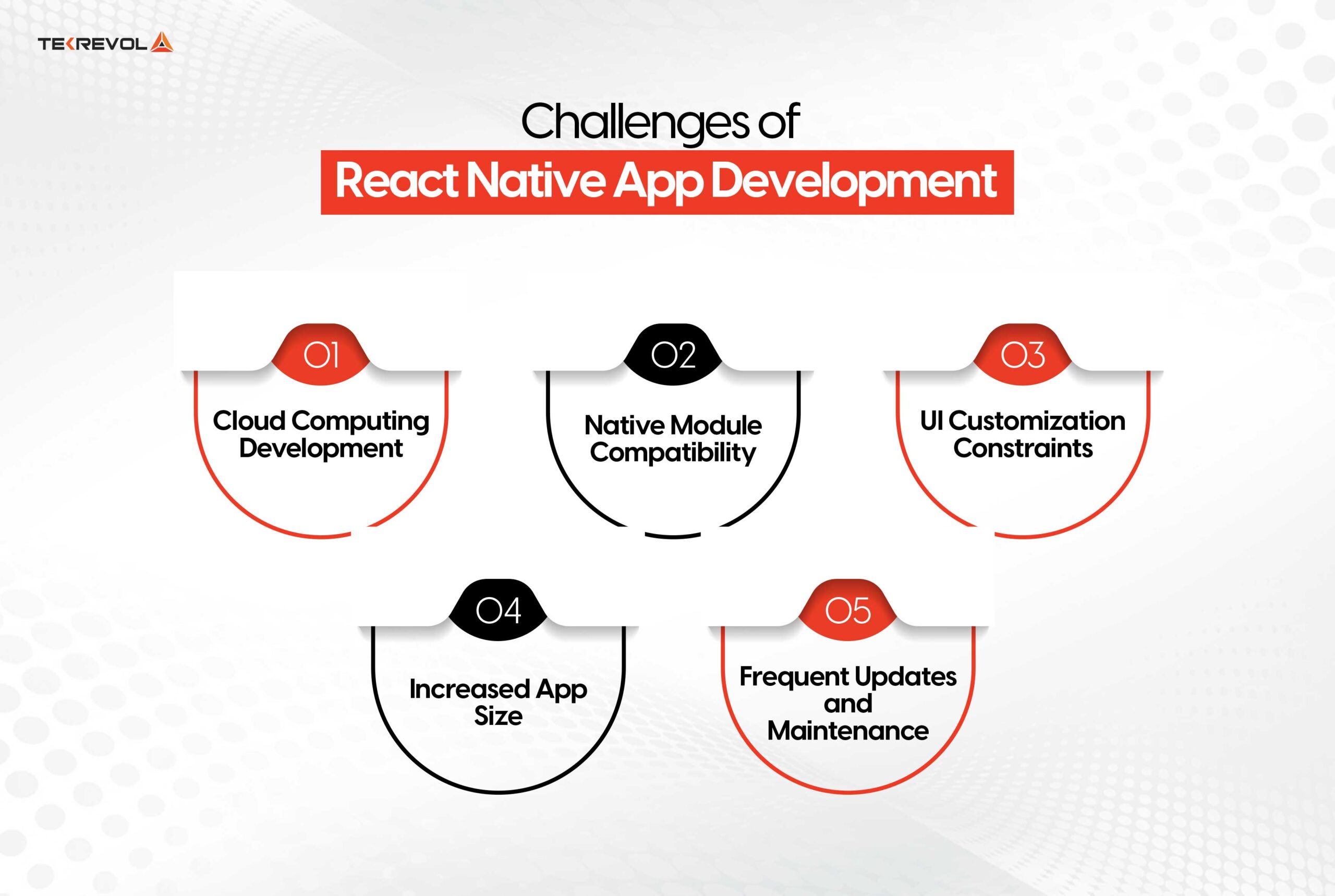
Before leveraging React Native for app development, one needs to consider the pros and cons of this framework. Despite the capability that React Native provides, some restrictions can influence the speed and flexibility of some applications.
Performance Limitations
While React Native offers performance close to that of native development, some applications can perform worse due to performance issues. Sometimes, the app can need complicated calculations or heavily built-up animations. In this case, it will be better to use native development.
Native Module Compatibility
While using React Native, not all native modules are supported, and one needs to build them separately or opt for third-party solutions. This can be a problem for developers especially when certain functionalities are required to be integrated.
UI Customization Constraints
Working with highly specific User Interfaces, as well as complex animations, can prove challenging in React Native. It is common that achieving the custom UI elements as fluid is difficult and may need native development for them to be perfected.
Increased App Size
React Native apps are generally large because libraries and dependencies are included within the application. It can also impact the size of the application itself and its functionality on devices of poor performance.
Frequent Updates and Maintenance
New versions of React Native are released frequently to improve functionality and address issues, so applications must be updated periodically to be compatible. It is possible that if one version of a program is not updated to the other, compatibility issues or even slow performance may occur.
Understanding the Cost of React Native App Development
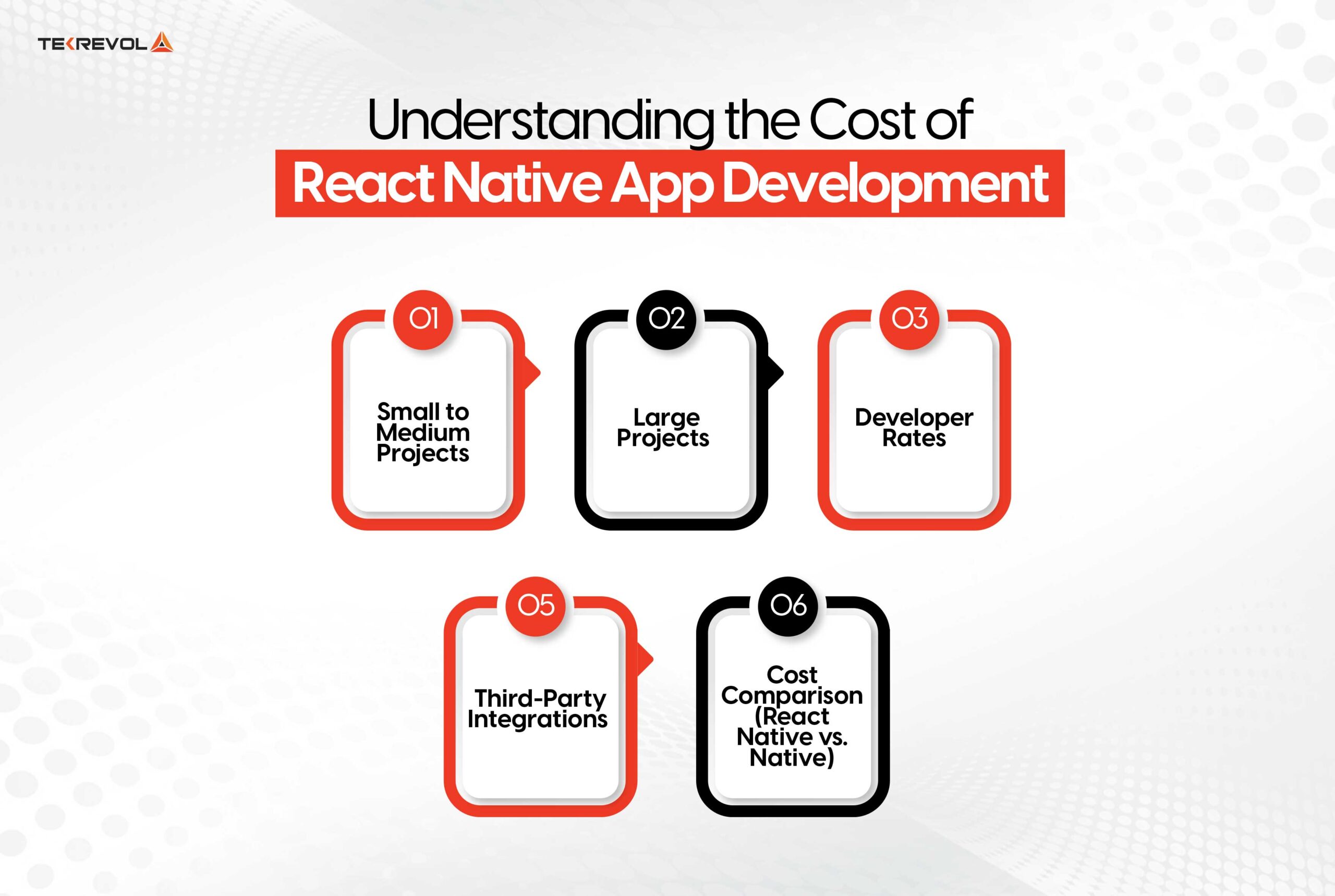
The cost of developing a React Native app depends on several big factors that can affect the overall big picture of the project such as its complexity, features, time, and third-party services. Compared to building an application specifically for iOS and Android, React Native is comparatively cheaper in most cases, but the total cost depends on your individual project needs.
Below is a breakdown of costs for React Native app development based on project size and other variables:
– Prettier for code formatting.– ESLint for linting.– GitLens for version control integration.– Error detection with quick fixes.– Built-in terminal.– Refactoring and navigation tools.– Redux dev tools for state management.– Chrome dev tools for network requests and breakpoints.
| Factors | Cost Range |
| Small to Medium Projects | $10,000 to $50,000 |
| Large Projects | $50,000 to $100,000+ |
| Developer Rates | Varies by region and experience |
| Third-Party Integrations | Additional costs may apply |
| Cost Comparison (React Native vs. Native) | React Native is more affordable overall |
How TekRevol Help With React Native App Development?
TekRevol emerges as the leading mobile app development Miami provider, offering top-notch React Native app development services while uniquely tailoring mobile solutions to different industries.
Our expert React Native developers build applications with high performance and extensibility, user-friendly operations for both iOS and Android. It involves detailed planning at an advanced level in addition to intensive testing and the best debug iterations for every project.
We use the latest technology to fight such issues as outdated documentation and the compatibility of third-party tools. Whether you have an existing app that needs improvement or a new app from scratch, TekRevol’s vast experience in React Native will help deliver value to the business while creating an efficient framework for the app.
We take pride in having a success rate of over 200 successful React Native projects in need and a customer satisfaction rating higher than 94%.
- Need an app that works seamlessly on iOS and Android?
- TekRevol helps you develop user-centric React Native apps that deliver exceptional performance.
- Book A Free Call Now!

 3915 Views
3915 Views January 2, 2025
January 2, 2025




